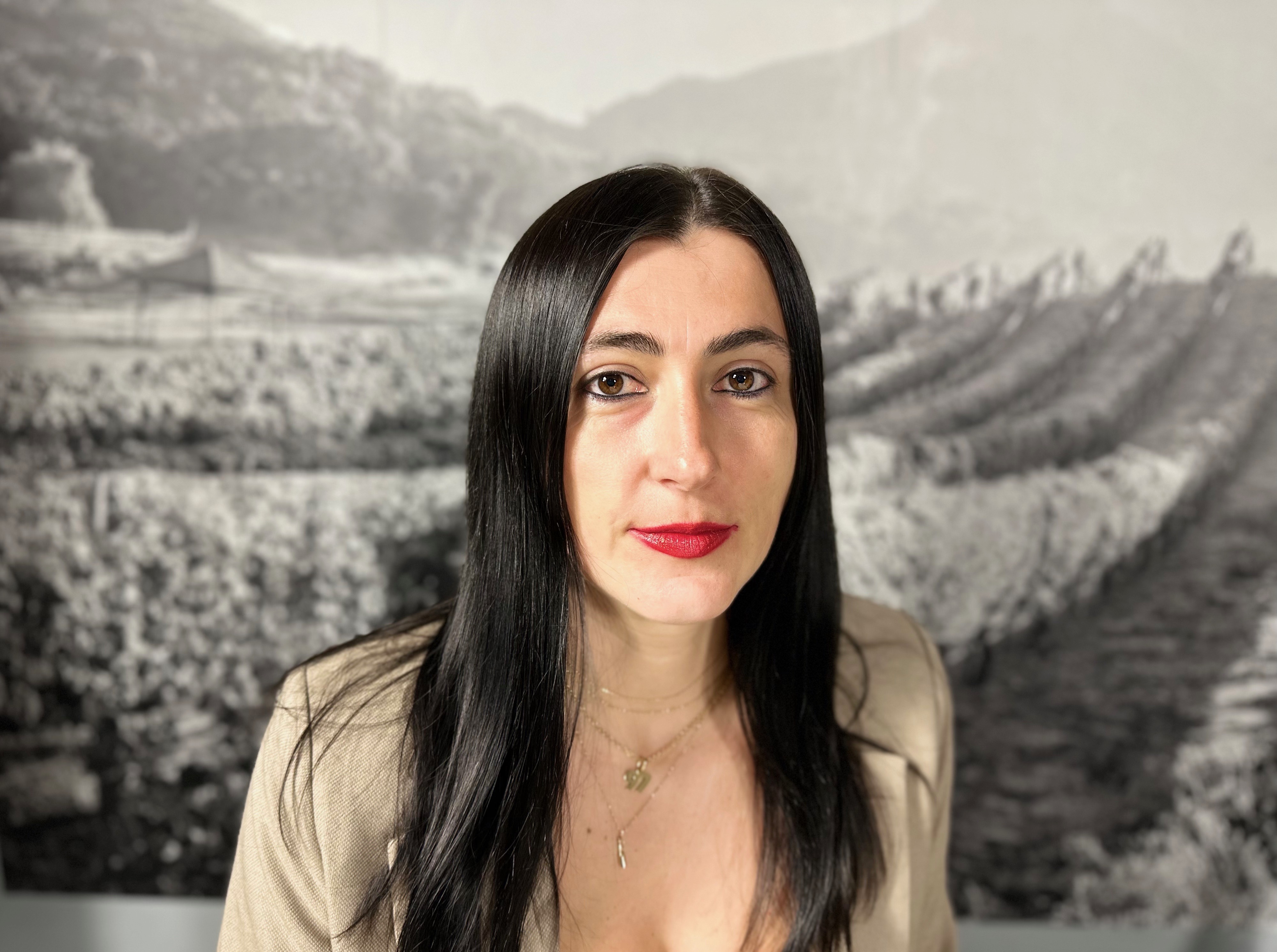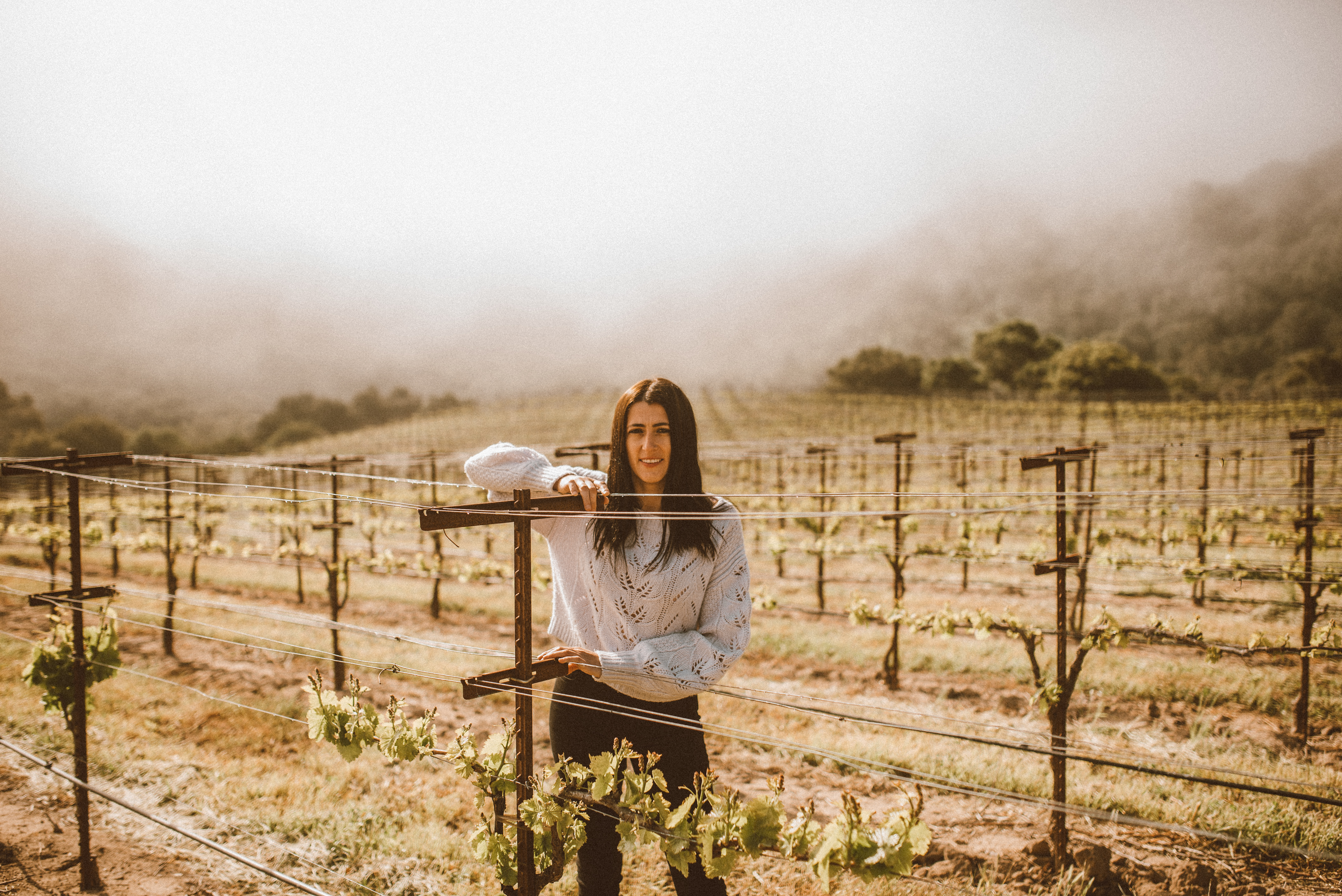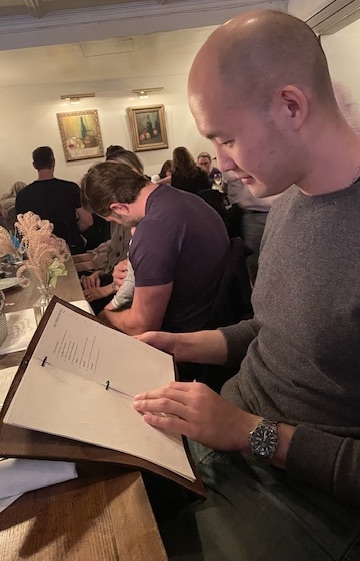Alma Rosa winery, located in the heart of Sta. Rita Hills, represents the dream of producing world-class Pinot Noir in California. Established in 2005 by Richard Sanford, the estate and wines embody the beauty of their unique terroir. Richard Sanford is, of course, a living legend and widely considered the “Godfather of Central Coast Pinot Noir.” It was he and his then partner who planted the first Pinot Noir vines in Santa Barbara back in 1971. He was inducted into the Vintners Hall of Fame by the Culinary Institute of America at Greystone in 2012.
Today, Alma Rosa’s winemaking is led by Samra Morris. Born in Bosnia, she survived the Bosnian War as a child, and later on moved to the US near Napa Valley by a fortuitous accident. Samra’s experiences have given her the confidence and perseverance to make wines that preserve and showcase the best of what Sta. Rita Hills offers.
Grape Collective talks to Samra Morris about her path to wine and her winemaking philosophy.
Lee Pai: Can you tell us a little bit about yourself, your journey into wine?
 Samra Morris: I am from Sarajevo in Bosnia and Herzegovina, and studied Food Sciences for my bachelor's and master's degree. During my bachelor's studies I just wanted to be a brewmaster - I loved beer. I did an internship at a really famous brewery in Sarajevo after my bachelor's studies, but I ended up hating the smell of beer, so I felt I needed to do something else. During my master's studies, I started falling in love with wine. I loved the chemistry and the aging process, it was something very interesting. And luckily for me, I accidentally moved close to Napa Valley after graduating, and was able to pursue a career in winemaking.
Samra Morris: I am from Sarajevo in Bosnia and Herzegovina, and studied Food Sciences for my bachelor's and master's degree. During my bachelor's studies I just wanted to be a brewmaster - I loved beer. I did an internship at a really famous brewery in Sarajevo after my bachelor's studies, but I ended up hating the smell of beer, so I felt I needed to do something else. During my master's studies, I started falling in love with wine. I loved the chemistry and the aging process, it was something very interesting. And luckily for me, I accidentally moved close to Napa Valley after graduating, and was able to pursue a career in winemaking.
(Samra Morris)
You moved to Napa Valley, but that was an accident?
During my studies at the University of Sarajevo, I met my now husband who was stationed in Sarajevo with the US Air Force at the time. We decided to get married after I graduated, and when he changed stations, I had no idea where I'm going in the US. Somehow, he ended up being stationed 30 minutes away from Napa and I was able to pursue my career as a winemaker.
How did you come to Alma Rosa?
When I first moved to Napa in 2012, Debra Eagle, the current GM of Alma Rosa, was the GM of Heston Vineyards in Napa and gave me my first job there. Then, I met Thomas River Brown and worked three harvests with him.
I initially wanted to be a Cabernet Sauvignon winemaker, but I gradually fell in love with Pinot Noir. After Deborah moved to Santa Barbara in 2018, she brought me on as an assistant winemaker in 2019. Then in 2020 when the winemaker at the time decided to quit a week before harvest, I felt it was a great opportunity. I knew I had the talent and the knowledge, so I told our owner, "Hey, I know I have never been a head winemaker, but I know I can do it."
Fortunately, he agreed. He felt that if I was able to survive a war as a child, I could manage the harvest. Now, I am still here at Alma Rosa and loving it.

Can you tell us a little bit about the estate?
Alma Rosa is situated in the beautiful Sta. Rita Hills of Santa Barbara County, started by Richard Sanford, the godfather of the Sta. Rita Hills. He was the first to plant Pinot Noir in our region, planting the first vines of Alma Rosa at the El Jabali vineyard in '83. We were also the first organically certified vineyard in the whole Santa Barbara County.
Our estate is over 600 acres, mostly planted with Pinot Noir and Chardonnay, but we have some Syrah and Grenache as well. We also make wines from a few other vineyards. The north slopes of the Sta. Rita Hills makes different Pinot Noirs and really shows the terroir. Sta. Rita Hills' location is unique because the coastal mountains shift from east to west, funneling the Pacific Ocean’s influence into our region, bringing morning fog and really cool nights. So, on average you have cool nights like high 40s low 50s, and during the day you have a perfect 75 to 80 degree days with sunshine and breeze coming from the ocean. This really maintains the beautiful acidity in our grapes. Another beautiful thing is our soils. We have diatomaceous earth that still contains seashells from a million years ago, so that develops the minerality and chalkiness.
Were you familiar with Alma Rosa prior to visiting Deborah there?
Yes, I knew the story of Richard Sanford - everybody knows, and what he did for the region and for the wine industry. It was amazing when I moved to Alma Rosa, it was Richard giving me a tour, it felt very special to actually have him personally showing me Alma Rosa's vineyards and Sta. Rita Hills, sharing how he decided to move and come particularly to Sta. Rita Hills and plant Pinot Noir.
What was the biggest adjustment for you coming to Alma Rosa? Because your winemaking experience up to that point was more Napa Valley and Cabernet focused.
When I worked with Thomas, dubbed the king of Cabernet Sauvignon, his favorite wine to make is actually Pinot Noir, and his own brand Rivers Marie has a Pinot Noir. So, I was exposed to making Pinot Noir with him. It's interesting, a lot of winemakers would make Cabernet, but they love making and drinking Pinot. I think for me, the beauty of Sta. Rita Hills stood out to me. In Napa, there are so many vineyards in such a small space, and then here you have a vineyard in the middle of nowhere.
It was easy to get used to beautiful beaches with sunshine, I didn’t get those in Northern California. I think it was a really good transition to be able to experience both worlds. I loved working in Napa, I'm so grateful to have learnt everything from a great winemaker there. But I'm also lucky to be in Sta. Rita Hills. Not a lot of people know about Sta. Rita Hills, but everybody knows where Napa is, so it's rewarding for me to go out to the different states and be able to share how beautiful our region and wines are.
It’s been a few years since you took over as a winemaker in 2020, what has been the biggest change for you?
Definitely. When I first took over, I didn't know my vineyards as well as I know them today. Now, going into my sixth harvest, I know my vineyards better, I know my estate better. I know which block can give me what I want. I'm also more involved in farming than I was at the beginning. It takes a long process to get to know your vineyard, and I'm excited with how much I've learnt compared to my first harvest in 2019, especially being in such a rush at the time.
You also get to work alongside Tony Biagi, your consulting winemaker, who is famously the 2020 Vintner of the Year by Antonio Galloni. Can you talk to us a bit more about your experience working with him? You also get a chance to interact with Richard Sanford, what has that been like?
I am very lucky. Being a young female winemaker, I get amazing support from Richard, he’s always championing me everywhere, it's really an honor.
I also love working with Tony. I feel we are the perfect match because of our personalities. It gets hectic sometimes during harvest, and he is always there calming me down. My favorite part of working with him is he lets me express myself. He tells me, this is your wine, you're doing the work, I'm just here for you to not let you fail. It's really amazing to have support from somebody who is so knowledgeable, pushing me to do better. He also has the best palate that I ever experienced tasting wines with, it's just on a different level. I consider him not just my consulting winemaker, but a really good friend and is like family.
Can you tell us a little bit more about the terroir of Sta. Rita Hills, specifically your estates and your vines and what makes them so special for you?
Yes, of course. The beauty of Sta. Rita Hills is dictated by the Pacific Ocean. Since our mountains run east to west, we get that funnel of the ocean influence, which brings that morning fog and really cool nights that maintains acidity. It's also our soil since we have all these dead seashells in them. This results in wines with beautiful fruit notes with fresh acidity and minerality. In our Pinot we get those chalky tannins, and in our Chardonnay, you will always have the saline notes from the ocean.
Our El Jabali estate is influenced by the two coasts, the Santa Barbara side and the Lompoc side; it's really, really unique. In our El Jabali Pinot, you always get a lot of herbal notes besides the fruit notes. And the construction of tannins is really amazing as well.
Another amazing aspect of our region is we have a really long growing season, so we can pick our grapes when we want and don't have to worry about something like rain coming.

Working within your different blocks of vines, do you have specific blocks that you prefer more and what drives that?
Every harvest I walk through my blocks tasting the grapes and I make a decision. I will know which blocks are for sparkling wines, for rosé, and so forth. So it's really about knowing exactly where my blocks are and what they're going to give me. Of course, some years are different because sometimes we can get heat. It always depends on Mother Nature.
What would you consider as your philosophy in winemaking and viticulture? What are you trying to achieve?
I really want to try to express the beauty of our El Jabali estate and our vineyards. I believe in growing great high-quality grapes that you don't need to manipulate in the cellars, which I don't. So, it's really about showing the beauty of each site on our estate as well as the other vineyards I work with. I really want people to taste the beauty I feel when I'm walking through the vineyard. That's my winemaking philosophy.
Also, we are a sustainable practicing vineyard and I spend a lot of time talking with my viticulturist, making sure we keep our soils healthy while growing our grapes. We control our yields and are very focused on producing high-quality fruit. It's very important for us, we want to make sure that our vines are happy and producing high-quality grapes, which makes my life easier in the cellar.
What do you feel makes Sta. Rita Hills Pinot Noir and Chardonnay distinct when compared to your peers across California?
I would say the flavor profile of our wines. Every region has its own distinction, but for me, I come across a lot of people who think all Chardonnays are buttery. But then they would be surprised after tasting ours, saying it’s completely different. It’s wonderful. It is the seashells that are still in the soils, and it really shows through that beautiful minerality and saline notes that's so distinct for Sta. Rita Hills.
And then there are our Pinot Noirs. I always say I can take my Pinot Noir anywhere and compare it to any producer, it's just so beautiful. There are a lot of herbal notes and chalkiness to it that makes it so special.
What are some of your favorite wine characteristics that you seek out as a drinker?
I love to drink clean wine. I'm very sensitive to any off notes, so I always seek out clean and fresh wines. Also, when I taste a wine, I want to understand and respect the region it's coming from, so I love wines that express their region. I love floral notes, like lilac and rose petals, that's one of my favorite characteristics when I smell a wine.
Do you have any experience with Bosnian wine?
I never made wine in Bosnia. But we have our two main varieties: Zilavka (white wine) and Blatina (red wine). When I first tasted Sta. Rita Hills Chardonnay, it kind of reminded me of home because Zilavka can be mineral driven as well, because of our soils and the influence of the Adriatic Sea. So that’s nice, a little bit of home in Sta. Rita Hills.
Have you since gone back and visited any parts of Bosnian wine industry?
I try to go back every year to see my family. Also, Alma Rosa did a wine tour there as well; we took our members there for 10 days and we explored Sarajevo, our capital, and the southern part of Bosnia where the wine regions are. It was so much fun to show them Bosnian wines and they loved it.
Read more about Richard Sanford, founder of Alma Rosa winery, here.











